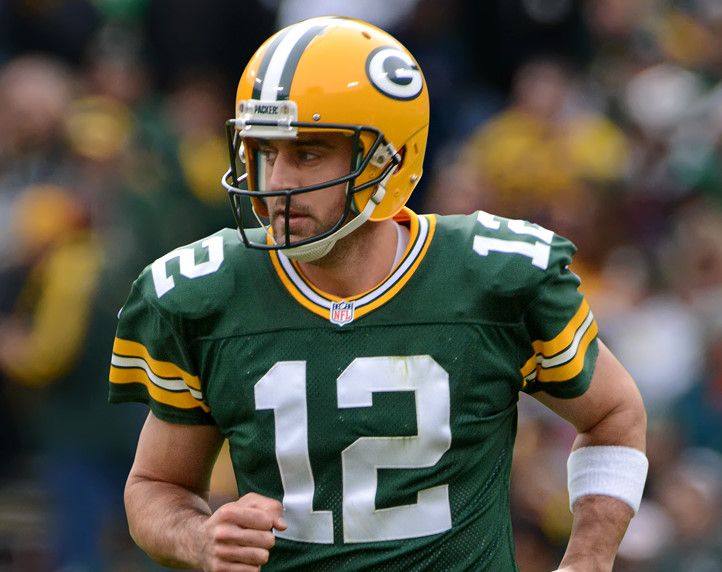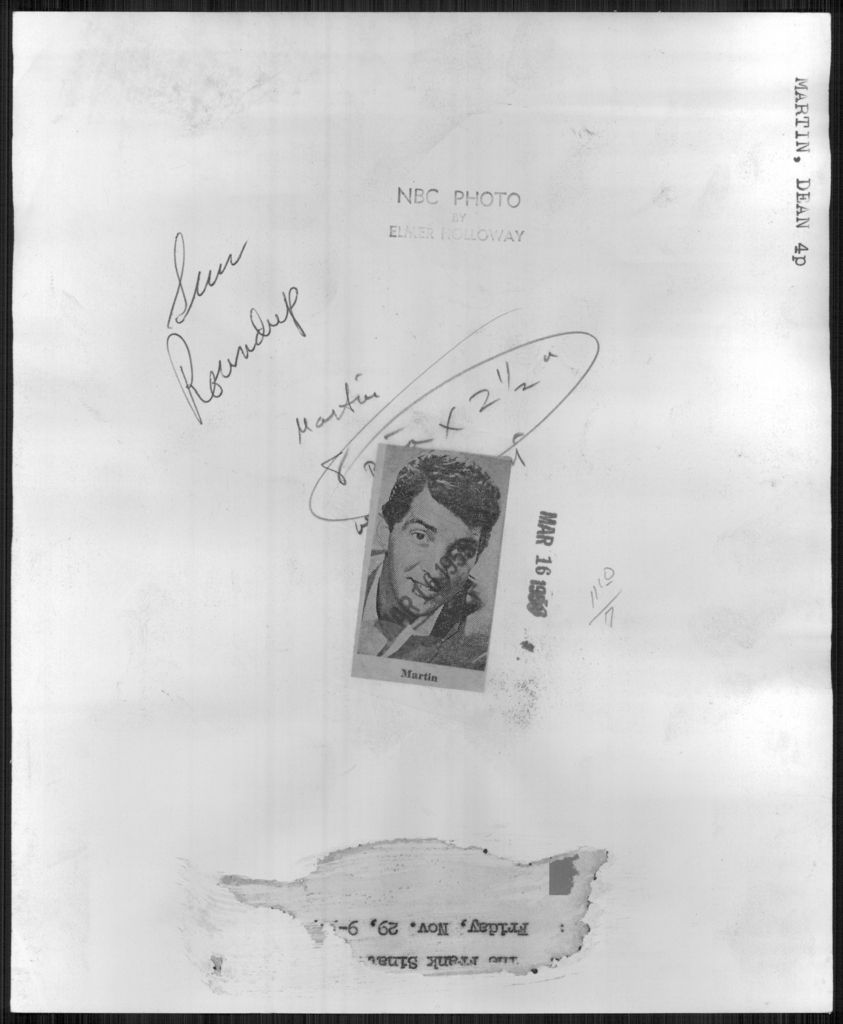
Dean Martin, born Dino Paul Crocetti, was an undeniable force of nature in the 20th century, a multi-talented American singer, actor, and comedian whose smooth demeanor earned him the moniker “King of Cool.” His career spanned decades, evolving from humble beginnings in Steubenville, Ohio, to the glittering stages of Las Vegas and the bright lights of Hollywood. Martin captivated audiences worldwide with his crooning voice, comedic timing, and seemingly effortless charm, becoming one of the most popular entertainers of his era.
His journey was one of remarkable transformation and enduring appeal, marked by pivotal partnerships, significant artistic shifts, and personal resilience. From the energetic slapstick of his early duo with Jerry Lewis to the sophisticated camaraderie of the Rat Pack and the relaxed geniality of his own long-running television show, Martin consistently reinvented himself while retaining a core persona that audiences adored. This article invites you on a detailed exploration of his extraordinary life, celebrating his monumental contributions to entertainment and reflecting on the events that shaped his iconic career.
We will trace the arc of his professional and personal life, revealing the dedication and ambition behind the seemingly easy-going facade. Join us as we remember the man who sold over 50 million records worldwide, appeared in 85 film and television productions, and etched an indelible mark on the landscape of popular culture.

1. Early Life and Beginnings: From Dino Crocetti to Dean Martin
Born Dino Paul Crocetti on June 7, 1917, in Steubenville, Ohio, Dean Martin’s early life was far removed from the glamour that would later define him. His Italian father, Gaetano Alfonso Crocetti, was a barber from Montesilvano, Pescara, and his Italian-American mother, Angela Crocetti, hailed from Fernwood, Ohio. This heritage instilled in him a foundational connection to his roots, even as he pursued an ambitious path.
Before finding fame in entertainment, the young Dino tried his hand at prizefighting, billing himself as “Kid Crochet” at the age of 15. This physically demanding pursuit left him with a broken nose, a scarred lip, and many broken knuckles, a testament to the harsh realities of his early life. He candidly remarked that of his 12 bouts, he “won all but 11,” a line that perfectly foreshadowed his signature self-deprecating humor.
His transition into show business saw him working as a roulette stickman and croupier in an illegal casino, having started as a stock boy in a tobacco shop. Simultaneously, he honed his singing talents with local bands, initially adopting the stage name “Dino Martini” after the Metropolitan Opera tenor Nino Martini. His crooning style was influenced by the likes of Harry Mills of The Mills Brothers and Perry Como, elements he would later weave into his own distinctive sound.
It was Cleveland bandleader Sammy Watkins who suggested the name change to Dean Martin in late 1940, a name that would soon become synonymous with charisma and musical artistry. He continued with Watkins until at least May 1943, before moving on to perform in New York by the fall of that year. During World War II, Martin was drafted into the U.S. Army but was discharged after 14 months due to a hernia, an early interruption that did not deter his burgeoning career. In his personal life, he married Elizabeth “Betty” Anne McDonald in October 1941, and they would eventually have four children before their divorce in 1949.
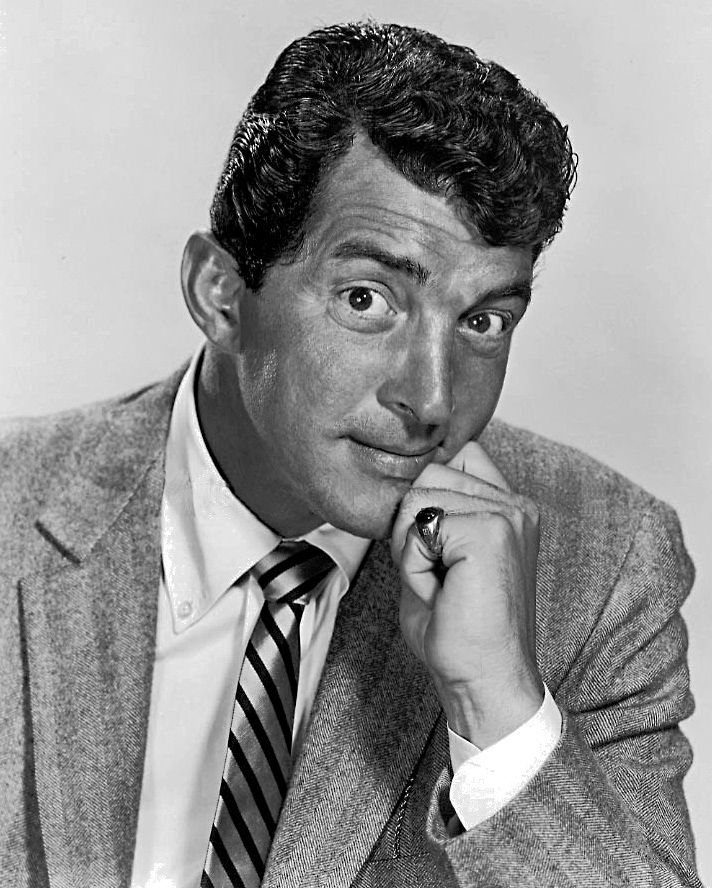
2. The Rise of Martin and Lewis: A Comedy Sensation
Dean Martin’s trajectory took a dramatic turn when he met comedian Jerry Lewis in August 1944 at the Belmont Plaza Hotel in New York City. Their initial encounter was casual, with Martin reportedly telling Lewis, “Hey, I saw your act, you’re a funny kid.” Both were performing on the same bill at the hotel’s Glass Hat Club, setting the stage for one of entertainment history’s most iconic partnerships.
The two quickly formed a fast friendship, leading to their first performance together at Atlantic City’s 500 Club on July 24, 1946. Their debut was, by all accounts, a disaster. Warned by club owner Skinny D’Amato that they faced dismissal if their second show wasn’t better, Martin and Lewis huddled in an alley, agreeing to “go for broke.” This desperate decision led to a completely improvised act, blending Martin’s singing with Lewis’s chaotic interruptions.
The improvised performance was a revelation: Lewis, dressed as a busboy, wreaked havoc on Martin’s act, dropping plates and disrupting the club’s decorum until he was chased from the room, pelted with bread rolls by Martin. This spontaneous, anarchic approach resonated deeply with the audience, who erupted in laughter. Their unique chemistry, which they later described as ignoring the audience and playing to each other, was the secret to their burgeoning success.
This triumph launched a series of lucrative engagements on the Eastern seaboard, culminating in a celebrated run at New York’s Copacabana. Their comedic genius quickly transitioned to other mediums, with their television debut on the first broadcast of CBS-TV network’s *The Ed Sullivan Show* (then *The Toast Of The Town*) on June 20, 1948. To further refine their act, they enlisted young comedy writers Norman Lear and Ed Simmons, who helped them elevate their performances beyond nightclubs and into the national consciousness.

3. The Acrimonious Split: The End of an Era
Despite their phenomenal success, the partnership between Dean Martin and Jerry Lewis began to fray in the mid-1950s. While they were drawing huge audiences and earning millions, critical comments and the persistent similarity of their films, which producer Hal B. Wallis refused to diversify, slowly chipped away at Martin’s enthusiasm. He increasingly felt underutilized, a sentiment that would ultimately lead to the duo’s bitter dissolution.
A particularly revealing incident occurred during the production of their 1954 feature *3 Ring Circus*. A publicity photo for *Look* magazine featuring Martin, Lewis, and actress Sheree North was published, but Martin was shocked to discover he had been cropped out of the picture, leaving only Lewis and North. This deeply humiliated him, prompting a furious confrontation with their publicity manager, Jack Keller, where Martin “called me every vile name he could think of.”
Lewis later recalled Martin expressing his profound dissatisfaction, saying he was “fed up to the ears playing a stooge.” Martin’s diminishing engagement became evident through his behavior on set, including arriving late. Lewis remembered Martin staring daggers at him one morning, stating, “Anytime you wanta call it quits, just let me know.” Martin himself articulated his frustration, asking, “Why the hell should I come in on time? There’s not a damn thing for me to do.”
His sentiment was further underscored by his reflections on the *3 Ring Circus* working conditions: “There was no sense of me being in that picture at all. The picture was on 35 minutes before I sang one song. Then it was an old one, ‘It’s a Big, Wide Wonderful World’, and I sang it to animals.” This deep-seated discontent ultimately led Martin to fulfill his contract to the letter, parting ways with Lewis on July 25, 1956, exactly ten years after their initial teaming, marking the end of an extraordinary, albeit strained, comedic dynasty.

4. Launching a Solo Career: Reinvention in Music and Film
Following the dramatic split from Jerry Lewis, Dean Martin embarked on a solo career, initially facing significant challenges. His first solo film, *Ten Thousand Bedrooms* (1957), proved to be a box-office failure. Furthermore, the musical landscape was shifting dramatically; the era of the pop crooner, which had been his comfort zone, was waning with the explosive advent of rock and roll. Martin’s hit “Volare” reached number 15 in the U.S. and number 2 in the UK, but the broader trend was clear.
Undeterred, Martin harbored a strong desire to establish himself as a serious dramatic actor, shedding the slapstick comedy image of his past. This ambition led him to accept a role in the war drama *The Young Lions* (1958), a bold move given it offered only a fraction of his former salary. What made this decision particularly significant was the opportunity to co-star with Hollywood giants Marlon Brando and Montgomery Clift, elevating his cinematic credibility.
Although Tony Randall initially held the part, the astute talent agency MCA recognized Martin’s immense potential. They saw that with this film, Martin could become a “triple threat,” capable of generating substantial income from his work in nightclubs, films, and records. Randall was subsequently paid off to relinquish the role, and Martin stepped in, a decision that proved to be the pivotal starting point of his remarkable comeback.
*The Young Lions* indeed marked the beginning of a new chapter. Martin’s performance garnered critical attention, proving his versatility beyond comedy. He quickly followed this success by starring alongside his soon-to-be close friend Frank Sinatra for the first time in the Vincente Minnelli drama, *Some Came Running* (1958). This period of reinvention solidified Martin’s status as a formidable individual talent, capable of commanding the stage and screen on his own terms.

5. The Rat Pack: Kings of Cool and Las Vegas
As Dean Martin’s solo career blossomed, a profound friendship developed between him and Frank Sinatra, laying the groundwork for one of the most iconic entertainment ensembles in history. In the late 1950s and early 1960s, Martin and Sinatra, alongside their friends Joey Bishop, Peter Lawford, and Sammy Davis Jr., formed what became famously known as the “Rat Pack.” Though they themselves preferred to call their group “The Summit” or “The Clan,” the “Rat Pack” moniker, borrowed from an earlier social circle centered on Humphrey Bogart, endured in popular imagination.
This charismatic quintet became legendary for their electrifying performances on the Las Vegas Strip. Their appearances were so highly anticipated that the city would literally flood with wealthy gamblers, eager to witness their unique blend of music, comedy, and spontaneous camaraderie. Marquees at the Sands Hotel, for instance, famously teased audiences with lines like “DEAN MARTIN—MAYBE FRANK—MAYBE SAMMY,” hinting at the unpredictable and exciting nature of their shows.
Their act, always performed impeccably in tuxedos, was a masterclass in entertainment. It featured each member singing individual numbers, dazzling duets, and harmonious trios, all interspersed with seemingly improvised slapstick routines and quick-witted banter. The humor often revolved around adult themes, with jokes about Sinatra’s womanizing and Martin’s characteristic drinking, as well as playful jabs about Davis’s race and religion, all delivered with an undeniable charm that captivated their audiences.
Beyond their stage personas, the Rat Pack also held significant social and political influence. Through Lawford’s marriage to Patricia Kennedy, sister of President John F. Kennedy, they had connections at the highest levels. More importantly, in the socially charged 1960s, Sinatra and Martin were staunch supporters of the civil rights movement, boldly refusing to perform in any clubs that would not permit black American or Jewish performers. Their enduring appeal has experienced a popular revival, even inspiring the contemporary *Ocean’s Trilogy* starring George Clooney and Brad Pitt, a testament to their lasting cultural impact.

6. The Dean Martin Show: Television Stardom and Unconventional Success
In 1965, Dean Martin embarked on a new chapter of his career, launching his weekly NBC comedy-variety series, *The Dean Martin Show*. This program would run for an impressive 264 episodes until 1974, solidifying his status as a major television star. His relaxed, easy-going demeanor, which became a hallmark of the show, quickly resonated with audiences, earning him a Golden Globe Award for Best Actor – Television Series Musical or Comedy in 1966, with further nominations in the subsequent three years.
Initially, Martin was reluctant to commit to a weekly TV series, but NBC’s persistence eventually wore him down. To make a final, seemingly impossible stand, Martin presented the network with a list of audacious conditions, certain they would be refused. He demanded an exorbitant amount of money, insisted on showing up at the studio only on Sundays, flatly refused to rehearse during the week (leaving special-material creator Lee Hale to stand in for him), and agreed to only one dress rehearsal before taping. Crucially, he declined to memorize any scripts, requiring the production staff to prepare cue cards for him, and even reserved the right not to sing if he didn’t feel like it.
To Martin’s astonishment, NBC consented to every single one of his demands. As Martin himself recounted, “They should have thrown them in my face, but they agreed to it all. So what the hell, I had to show up!” This unprecedented agreement allowed Martin to cultivate a unique, laid-back television persona that was unlike anything else on air. He capitalized on his image as the half-drunk crooner, charmingly hitting on women and making witty, if sometimes slurred, remarks about his fellow celebrities during the show’s segments.
This relaxed behavior was not a sign of unprofessionalism but rather a calculated element of Martin’s approach to taping. He knew that if he stumbled over a cue-card reading or momentarily lost his place, he could simply stay in character, cover the mistake with an offhand remark, and smoothly continue. Colleagues like Lee Hale consistently maintained that Martin was always professional and prepared, familiarizing himself with orchestral accompaniments by listening to cassette tapes while driving to the studio, ensuring his seemingly effortless performances were, in fact, meticulously managed.

7. The Show’s Evolution and Martin’s Personal Discipline
Initially, *The Dean Martin Show* saw Martin primarily acting as a master of ceremonies, much like other popular TV personalities such as Ed Sullivan. However, as Lee Hale recalled, “After four or five shows, the show was in trouble, and director Greg Garrison thought that involving Dean more might cure all ills.” Martin responded with enthusiasm, diving into guest-star spots and comedy sketches, which significantly boosted the show’s appeal and made it truly his own. The format evolved, reducing the number of variety acts to create more space for Martin’s unique contributions.
The show’s loose format, characterized by quick-witted improvisation from Martin and his weekly guests, often led to clashes with NBC censors who demanded stricter scrutiny of content. Martin, known for his unscripted charm, occasionally used obscene Italian phrases off-the-cuff, leading to complaints from viewers who understood the language. Despite these minor controversies, the show consistently ranked in the top ten, a testament to its widespread popularity and Martin’s undeniable appeal.
In a display of his gratitude and loyalty to the show’s producer, Greg Garrison, a pioneer TV producer from the 1950s, Martin famously made a handshake deal granting Garrison 50% ownership of the show. This significant agreement, however, later became the subject of a lawsuit brought by NBCUniversal, highlighting the immense value and success the program achieved under their collaborative effort.
Despite his carefully crafted public image as a heavy drinker – even sporting a vanity license plate that read “DRUNKY” – Dean Martin’s actual alcohol consumption was notably disciplined. His convincing portrayals of boozers in films like *Some Came Running* and *Rio Bravo* often led to unsubstantiated claims of alcoholism, but in reality, Martin was known to be the first to call it a night. When not on tour or a film location, he prioritized going home to his family every night, as his second wife Jeanne confirmed before their divorce, saying, “He was home every night for dinner.” This dedication to his family and his professional discipline underpinned the effortless charm that audiences adored, proving that the “King of Cool” was much more than just his on-screen persona. By the early 1970s, *The Dean Martin Show* continued to earn solid ratings, and while he was no longer a Top 40 hitmaker, his record albums continued to sell well, demonstrating his lasting appeal and diversified financial ventures, including a signature line of golf balls and the Dean Martin Tucson Open.

8. Continued Triumphs in Music and Recording
Dean Martin’s musical career, far from waning after the Martin and Lewis split and the rise of rock and roll, continued to flourish, solidifying his status as a recording star. While he initially copied the styles of Harry Mills and Bing Crosby, he developed his own distinctive crooning sound, capable of holding his own in duets with vocal giants like Frank Sinatra and Bing Crosby. Despite the popular belief that he was simply a charismatic performer, Martin was incredibly prolific, recording an astounding 35 studio albums and over 550 songs throughout his career, a testament to his dedication and artistry.
His signature tune, “Everybody Loves Somebody,” famously knocked The Beatles’ “A Hard Day’s Night” off the number one spot in the United States in 1964, a remarkable feat that underscored his enduring appeal in a rapidly changing musical landscape. This success was quickly followed by “The Door is Still Open to My Heart,” which reached number six that same year. Martin’s influence even extended to other legends; Elvis Presley was said to be a fan, reportedly patterning his performance of “Love Me Tender” after Martin’s smooth style.
Demonstrating his versatility and willingness to embrace different genres, Martin, much like Elvis, was influenced by country music. By 1965, several of his albums, including *Dean ‘Tex’ Martin Rides Again*, *Houston*, *Welcome to My World*, and *Gentle on My Mind*, featured country and western songs by renowned artists such as Johnny Cash, Merle Haggard, and Buck Owens. His embrace of country music was so significant that he hosted country performers on his television show and was honored as “Man Of the Year” by the Country Music Association in 1966. His recording career culminated with *The Nashville Sessions* in 1983, a powerful reminder of his diverse musical journey.
While some of his earlier hits were immensely popular, a song he performed in *Ocean’s 11*, “Ain’t That a Kick in the Head?”, gained a surprising resurgence. Though not a hit at the time of its release, it has enjoyed a significant revival in media and pop culture, becoming his most frequently played song for two decades, showcasing the timeless quality of his music. This, coupled with his consistent popularity as a live act, ensured that for three decades, Martin remained one of the most sought-after performers in Las Vegas, where he seamlessly blended his singing and comedic talents, a legacy built in part on his earlier years with Lewis.
Read more about: Beyond the Spotlight: 14 Surprising Ways Adele’s Friends Reveal She’s Completely Different in Real Life

9. A Prolific Film Career Beyond Comedy
After his pivotal role in *The Young Lions* and his initial collaboration with Frank Sinatra in *Some Came Running*, Dean Martin’s film career blossomed, demonstrating his range and cementing his status as a leading man beyond slapstick comedy. He became a versatile actor, gracing the screen in various genres, often alongside Hollywood’s biggest names. His portrayal of the character “Dude” in Howard Hawks’ 1959 Western classic *Rio Bravo*, where he starred with John Wayne and Ricky Nelson, was particularly memorable, showcasing a more rugged and dramatic side to his persona. He reunited with Wayne in 1965 for *The Sons of Katie Elder*, playing brothers on screen.
Martin continued to explore diverse roles throughout the 1960s. He appeared in the film version of the stage musical comedy *Bells Are Ringing* in 1960 and earned a Golden Globe nomination for his performance in the 1960 comedy *Who Was That Lady?*. His ambition for dramatic roles persisted, leading him to portray a Southern politician in 1961’s *Ada* and star opposite Geraldine Page in the intense stage drama adaptation *Toys in the Attic* in 1963. Even in the 1970s, he achieved significant box-office success with a dramatic role in the star-studded *Airport* (1970) alongside Burt Lancaster.
His collaboration with Frank Sinatra extended beyond the Rat Pack stage, with the duo starring in several more films. These included the iconic crime caper *Ocean’s 11*, the musical *Robin and the 7 Hoods*, and the Western comedies *Sergeants 3* and *4 for Texas*, often featuring their fellow Rat Pack members such as Sammy Davis Jr., Peter Lawford, and Joey Bishop. He also starred in the romantic comedy *Marriage on the Rocks* with Sinatra. Beyond these notable pairings, Martin frequently co-starred with Shirley MacLaine in a number of films, including *Artists and Models*, *Career*, *All in a Night’s Work*, and *What a Way to Go!*, further diversifying his cinematic portfolio.
Martin also displayed a playful willingness to satirize his own public image. In Billy Wilder’s 1964 comedy *Kiss Me, Stupid*, he played a satirical variation of his own womanizing persona as Las Vegas singer “Dino” alongside Kim Novak. He continued to poke fun at his image in the popular Matt Helm spy spoofs of the 1960s, a series in which he also served as a co-producer. In the third Matt Helm film, *The Ambushers* (1967), his character even quipped, “I’ll remember you from the great beyond,” adding sotto voce, “somewhere around Steubenville, I hope,” a witty nod to his Ohio roots, proving his ability to blend charm with self-awareness on screen.
Read more about: Marisa Paredes: 12 Defining Moments in the Illustrious Career of a Spanish Cinema Icon
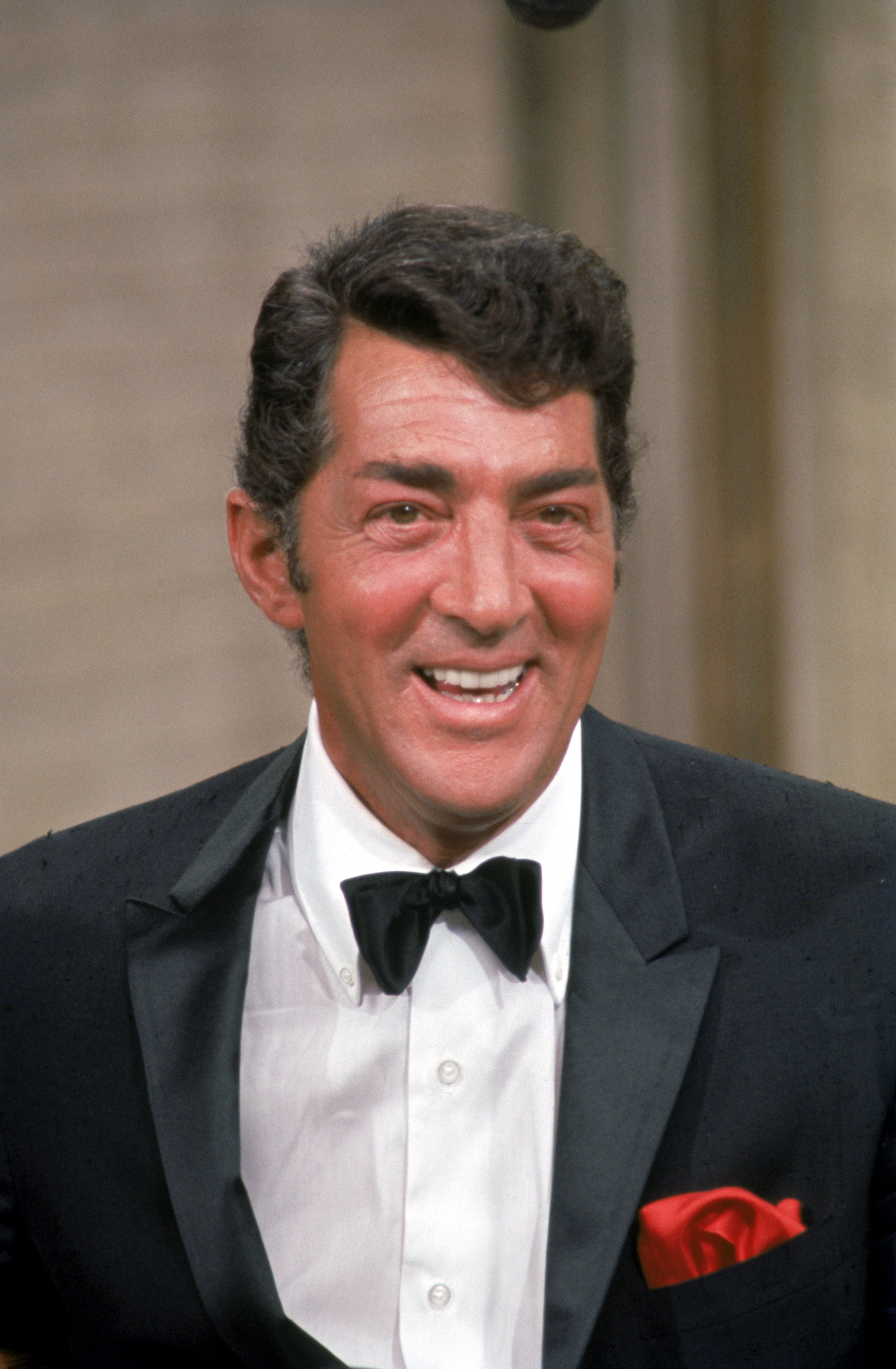
10. The Dean Martin Celebrity Roast and Financial Acumen
As *The Dean Martin Show* neared the end of its successful run, Dean Martin, ever the pragmatist, began to reduce his demanding schedule once he felt financially secure. The final season of his variety show, spanning 1973–1974, was ingeniously retooled into a series of celebrity roasts. This format significantly reduced his direct involvement, as it primarily featured Martin and a panel of his celebrity pals playfully making fun of a wide array of popular entertainment, athletic, and political figures. This concept proved to be a smash hit, captivating audiences with its irreverent humor and candid celebrity interactions.
Even after *The Dean Martin Show* was canceled, the immense popularity of the roasts led NBC to continue airing *The Dean Martin Celebrity Roast* as a highly anticipated series of TV specials, which ran successfully through 1984. These specials extended Martin’s television presence for another decade, cementing his role as the genial and unflappable roastmaster. This innovative format allowed him to remain a prominent figure in entertainment with a less strenuous commitment, showcasing his enduring appeal and his smart approach to managing his career.
Beyond his entertainment ventures, Martin demonstrated a keen eye for business. He found a way to merge his personal passion for golf with his entrepreneurial spirit by offering a signature line of golf balls. This initiative not only leveraged his celebrity status but also connected him with a sport he loved. Furthermore, the Dean Martin Tucson Open became an event on golf’s PGA Tour from 1972 to 1975, further intertwining his name with the sport and showcasing his diverse financial interests. By the time of his death, Dean Martin was reportedly the single largest minority shareholder of RCA stock, highlighting his astute business sense and long-term financial planning.

11. Personal Life: Marriages and Family Connections
Dean Martin’s personal life, while often shielded from his public persona, was marked by three marriages and a deep connection to his family. His first marriage was to Elizabeth Anne “Betty” McDonald, whom he wed in October 1941 in Cleveland. The couple shared an apartment in Cleveland Heights for a while and eventually had four children together: Craig, born in 1942; Claudia, born in 1944; Gail, born in 1945; and Deana, born in 1948. This marriage, which saw the birth of his first four children, concluded with their divorce in 1949, a significant personal change as his career was rapidly ascending.
Later in 1949, Martin married Dorothy Jean “Jeanne” Biegger, a former Orange Bowl queen from Coral Gables, Florida. This union became his longest, lasting 24 years until their divorce in 1973. Together, Dean and Jeanne had three children: Dean Paul Martin, born in 1951; Ricci Martin, born in 1953; and Gina Martin, born in 1956. Despite his public image as a carefree boozer, Jeanne confirmed his dedication to his family before their divorce, stating, “He was home every night for dinner,” which offered a glimpse into the private life of the “King of Cool.”
Less than a month after his second marriage ended, Martin, then 55, married 26-year-old Catherine Hawn on April 25, 1973. Hawn was a receptionist at a chic Beverly Hills hair salon. While they had no biological children of their own, Martin adopted Hawn’s daughter, Sasha, welcoming her into his family. However, this marriage was relatively brief, concluding with their divorce on November 10, 1976. He was also briefly engaged to Gail Renshaw, Miss World–U.S. 1969, and after his divorce from Hawn, had a brief relationship with model and longtime friend Patricia Sheehan. Eventually, Martin reconciled with Jeanne, though they never remarried.
His children continued to carry on aspects of his legacy, both personally and professionally. His daughter Gail sang in Las Vegas and on many TV shows, including his own, and co-hosted his summer replacement series on NBC. Daughter Deana Martin continues to perform to this day, while his youngest son Ricci Martin also performed until his death in August 2016. His eldest son, Craig, was a producer on Martin’s television show, and daughter Claudia became an actress, appearing in films such as *For Those Who Think Young*. The family circle also extended to notable in-laws, with his daughter Gina marrying Carl Wilson of The Beach Boys, and his son Dean Paul Martin being married to both figure skater Dorothy Hamill and actress Olivia Hussey at different times. Craig was also married to Lou Costello’s daughter Carole until her passing.
Read more about: Betty Bonney, Singer of ‘Joltin’ Joe DiMaggio,’ Dies at 100: A Look Back at Her Enduring Legacy in Big-Band and Television

12. A Public Reconciliation and Later Film Appearances*
One of the most poignant moments in Dean Martin’s later life was his public reconciliation with Jerry Lewis. This unexpected reunion occurred on Lewis’s Labor Day telethon benefiting the Muscular Dystrophy Association in September 1976. Frank Sinatra orchestrated the surprise, bringing Martin out on stage, shocking Lewis and eliciting a massive standing ovation from the audience. As the two men embraced, the phones for the telethon lit up, resulting in one of its most profitable years to date, a testament to the enduring public affection for their partnership.
Jerry Lewis later described this event as one of the three most memorable of his life. During their brief on-stage interaction, Lewis quipped, “So, you working?” to which Martin, playing his characteristic drunk persona, replied that he was appearing “at the ‘Meggum'” (meaning the MGM Grand Hotel). This reunion, along with the later tragedy of Martin’s son Dean Paul’s death, helped to bridge the gap between the two former partners. They maintained a quiet friendship afterward, though they only performed together one more time, on Martin’s 72nd birthday in 1989, a final bittersweet performance for fans.
In the 1980s, Martin briefly returned to the silver screen with appearances in the star-laden and commercially successful *The Cannonball Run* (1981) and its sequel, *Cannonball Run II* (1984). Although critically panned, these films provided fans with a chance to see him on screen again, alongside a host of other celebrities. These roles, while minor, added to his extensive filmography and showed his willingness to engage with entertainment in his later years.
His musical output also saw some late-career activity. While his final Reprise album, *Once in a While*, recorded in 1974, wasn’t issued until 1978, his last official recordings were made for Warner Bros. Records. *The Nashville Sessions* was released in 1983, from which he scored a minor hit with “(I Think That I Just Wrote) My First Country Song,” recorded as a duet with Conway Twitty, which made a respectable showing on the country charts. A follow-up single, “L.A. Is My Home” / “Drinking Champagne,” came in 1985. He even had a minor hit single with “Since I Met You Baby” and created his first music video, which appeared on MTV, a project developed by his youngest son, Ricci, demonstrating his adaptability even late in his career.
Read more about: Top 6 Famous People That Ruined Their Career With One Photo

13. Later-Life Tragedies and Retreat from Public Life
Despite his professional triumphs and personal joys, Dean Martin experienced profound tragedies in his later life that deeply affected him and led to a retreat from public view. One significant personal upheaval was his divorce from his second wife, Jeanne, in 1972, ending a 24-year marriage. A week later, his business partnership with the Riviera hotel in Las Vegas dissolved amid reports of the casino’s refusal to agree to Martin’s request to perform only once a night. He subsequently joined the MGM Grand Hotel and Casino, becoming the featured performer on their opening night of December 23, 1973, with his contract also requiring him to star in a film, *Mr. Ricco*, for Metro-Goldwyn-Mayer studios, which marked his final starring film role in 1975.
The most devastating blow, however, came on March 21, 1987, when his son, actor Dean Paul Martin, tragically died. Dean Paul, formerly known as Dino of the 1960s teeny-bopper rock group Dino, Desi & Billy, was killed when his F-4 Phantom II jet fighter crashed during a flight with the California Air National Guard. This immense loss plunged Dean Martin into a deep state of grief, leaving him profoundly depressed and demoralized. The death of his son had an irreversible impact on his spirit and his desire for public life.
The depth of his suffering led to a significant change in his habits. Jerry Lewis, in an on-stage interview in 2005, stated that subsequent to his son’s death, Martin became a reclusive alcoholic. This period of intense grief and withdrawal was widely recognized by those close to him. An attempt to help Martin recover from his sorrow led to a tour with Sammy Davis Jr. and Frank Sinatra in 1988, dubbed “The Together Again Tour.” However, the tour sputtered and was eventually cut short, a clear indication of Martin’s profound emotional distress and his struggle to find joy in performing after such a personal loss, marking a somber chapter in his otherwise glittering career.
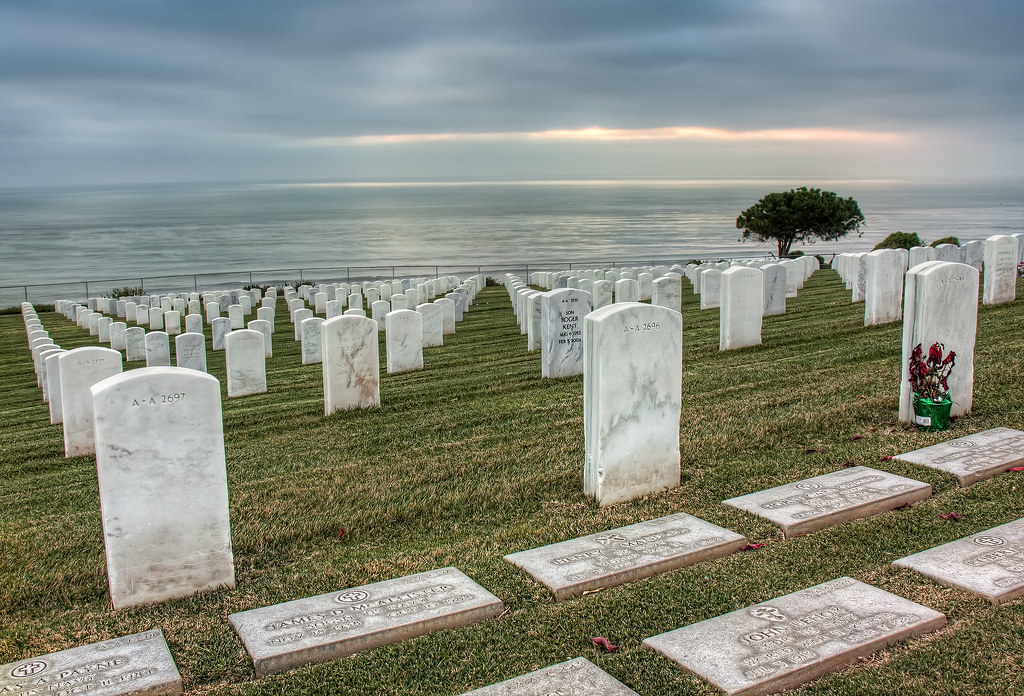
14. Illness and Death: The End of an Era
Dean Martin, a lifelong heavy smoker, faced a severe health crisis in his final years. In September 1993, he was diagnosed with lung cancer at Cedars Sinai Medical Center. Doctors informed him that surgery would be necessary to prolong his life, but in a decision that reflected his characteristic defiance and perhaps a weariness from public life and personal loss, Martin rejected the recommended procedure. This choice signaled his quiet acceptance of his condition and a desire to live out his remaining time on his own terms.
Following his diagnosis and refusal of treatment, Martin gradually retired from public life in early 1995. He spent his last months away from the spotlight, in the comfort and privacy of his Beverly Hills home. On Christmas Day, December 25, 1995, at the age of 78, Dean Martin passed away due to acute respiratory failure, a direct result of emphysema, a condition exacerbated by his extensive smoking history. His death marked the end of an extraordinary era in American entertainment, leaving a void in the hearts of millions of fans worldwide.
In a fitting tribute to his immense contributions to the entertainment world, particularly his legendary status in Las Vegas, the lights of the iconic Las Vegas Strip were dimmed in his honor. This symbolic gesture acknowledged his profound impact on the city, where he had been a marquee attraction for decades, the undisputed “King of Cool.” Dean Martin was laid to rest at the Westwood Village Memorial Park Cemetery in Los Angeles, a serene final resting place for many Hollywood legends.
His crypt features a simple yet powerful epitaph: “Everybody loves somebody sometime,” the opening line of his signature song. This inscription serves as a timeless reminder of his musical legacy and the universal themes of love and connection that he so effortlessly conveyed through his music. Even in death, Martin’s words continue to resonate, embodying the charm and warmth that defined him throughout his life and career, ensuring that his memory endures.
Read more about: Steve Lawrence: Remembering an Entertainment Icon’s Illustrious Life, and His Final Battle with Alzheimer’s Disease

15. An Enduring Legacy: Awards, Tributes, and Pop Culture Influence
Dean Martin’s legacy has continued to resonate powerfully in the decades since his passing, influencing popular culture and receiving numerous posthumous honors. In 1997, Ohio Route 7 through his hometown of Steubenville was officially rededicated as Dean Martin Boulevard, marked by road signs featuring an Al Hirschfeld caricature of his likeness. A historical marker with a small picture and biography was also placed in Gazebo Park. His hometown further celebrates his memory with The Dean Martin Hometown Festival, held annually every June, featuring impersonators, friends, family, and entertainers, many of Italian ancestry, a lively tribute led by The Dean Martin Association since 2024.
His enduring influence on the entertainment hubs he graced is evident through other physical tributes. In 2005, Clark County, Nevada, renamed a portion of Industrial Road as Dean Martin Drive, and a similarly named street was dedicated in Rancho Mirage, California, in 2008. There is also a street named after him in San Antonio, Texas, demonstrating the widespread geographical reach of his admiration. These permanent markers ensure that his name remains synonymous with the glamour and cool he embodied.
His musical catalog also continues to thrive. In 2004, Martin’s family was presented with a gold record for *Dino: The Essential Dean Martin*, which became his fastest-selling album and hit the iTunes Top 10, later certified “Platinum” in 2006. The enduring appeal of his music was further highlighted in 2006 when a duet of “Baby, It’s Cold Outside” with Martina McBride reached No. 7 on the R&R AC chart and No. 36 on the R&R Country chart, marking his highest chart placement since 1965. This led to the release of *Forever Cool*, a 2007 duets album featuring his voice alongside contemporary artists like Kevin Spacey, Shelby Lynne, and Robbie Williams.
Dean Martin’s impact is also immortalized in Hollywood. His footprints were cast in cement at Grauman’s Chinese Theatre in 1964, and he has an impressive three stars on the Hollywood Walk of Fame: one for movies, one for recordings, and one for television. In February 2009, he was posthumously honored with a Grammy Lifetime Achievement Award, accepted by four of his surviving children. In 2010, he received a posthumous star on the Italian Walk of Fame in Toronto, Ontario, Canada, and his father’s town of origin, Montesilvano, dedicated a square and a congress palace in his honor.
Beyond formal accolades, Martin’s music has become a ubiquitous presence in popular culture. Hits like “Ain’t That a Kick in the Head,” “Sway,” “You’re Nobody Till Somebody Loves You,” “That’s Amore,” and “Everybody Loves Somebody” have been prominently featured in countless films, including Oscar-winners like *Logorama*, and classics such as *A Bronx Tale*, *Casino*, *Goodfellas*, and *Moonstruck*. His songs have graced television series like *Friends*, *The Sopranos*, and *Mad Men*, and even video games such as *The Godfather: The Game* and *Fallout: New Vegas*, alongside fashion shows like the Victoria’s Secret Fashion Show.
Read more about: Marisa Paredes: 12 Defining Moments in the Illustrious Career of a Spanish Cinema Icon
His persona has also inspired numerous portrayals and tributes. Actors like Joe Mantegna, who was nominated for an Emmy and a Golden Globe for his portrayal in the 1998 HBO film *The Rat Pack*, and Jeremy Northam, who received critical acclaim in the 2002 TV movie *Martin and Lewis*, have brought his character to life. Dean Martin is also the subject of popular video slot machines in casinos, and his compilation album *Amore!* debuted at number one on Billboard’s Top Pop Catalog Albums chart in 2009. Live tribute shows like *The Rat Pack: Live from Las Vegas* continue to tour, and his voice has even been humorously referenced in animated series, such as John Byner’s imitation of Martin for the Ant in *The Ant and the Aardvark*. Most recently, archival footage of Martin as Matt Helm appeared in Quentin Tarantino’s 2019 film *Once Upon a Time in Hollywood*, demonstrating that the “King of Cool” remains an indelible part of the cultural fabric, a smooth, charismatic icon whose influence shows no signs of fading. His legacy is not just etched in records and films, but in the collective memory of generations, a testament to a life lived with charm, talent, and an unparalleled sense of cool.

